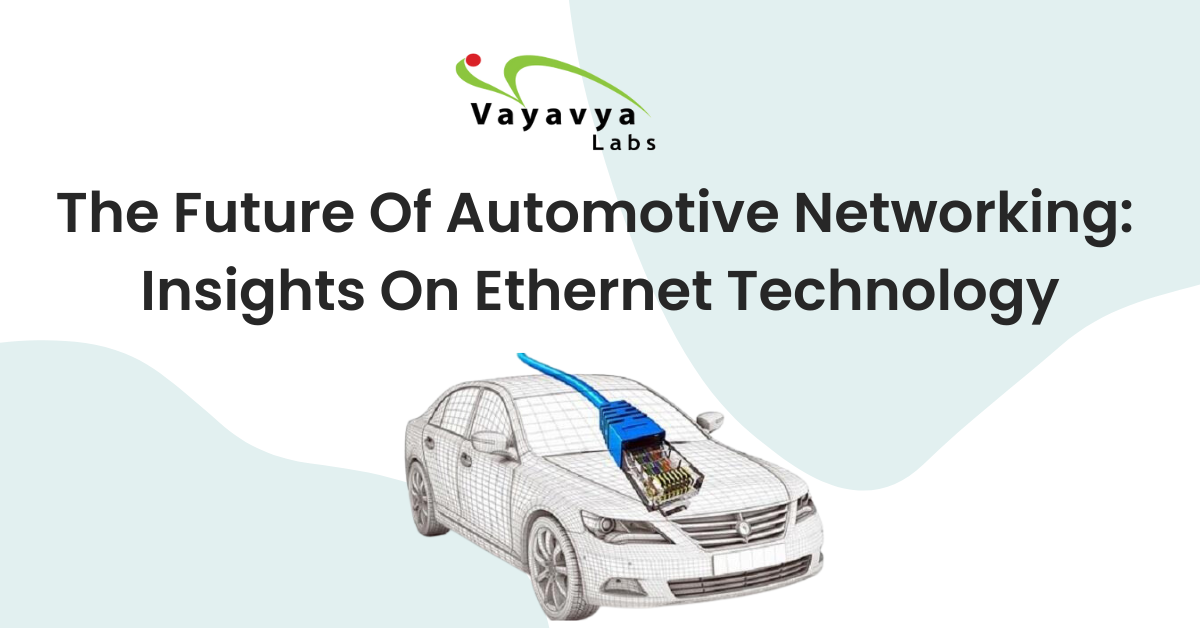In recent years, the automotive industry has seen a significant increase in the use of Ethernet technology in vehicles. This trend is driven by the need for faster and more reliable communication between electronic control units (ECUs) in modern cars, as well as the growing demand for advanced driver assistance systems (ADAS) and other high-bandwidth applications.
To learn more about the benefits and challenges of Automotive Ethernet, we spoke to our Engineers working on this technology. We cover in this blog their views and insights on the latest trends in Automotive Ethernet, the future it holds, the role of Ethernet in autonomous driving, and the key considerations for designing and testing Ethernet-based systems for the automotive industry.
Q. How would you define Ethernet connectivity in Automotive? And what makes it different from traditional connectivity?
A: In an automotive vehicle, there are a huge number of ECUs, each performing important tasks.
These ECUs need to communicate with each other and with the central compute unit(Cluster Unit).
Traditionally the connectivity between ECUs and the Cluster unit was done using CAN(controller area network).
The bandwidth supported by CAN(1Mbps), and CAN-FD(5Mbps), was sufficient for signal transmission with small data.
The advancements in Automotive led to increased connectivity bandwidth requirements.
Today vehicles are equipped with IVI(In-Vehicle Infotainment), ADAS(Advanced Driver Assistance System), 4+ Displays, 6+ Cameras/SVC(Surround View Camera), AVB/TSN(Time Sensitive Networks, Zonal computing(ZC) architecture, Internet connectivity, Cloud computing.
These functionalities need connectivity bandwidth in terms of 100-1000Mbps and hence the need for Ethernet in Automotive.
Q. What are some of the key benefits that businesses can expect to see from implementing Ethernet connectivity in automotive?
A: Ethernet is already being used in High-end automotive vehicles for infotainment purposes.
Vehicles with Main display/Passenger display/Rear seat display, provide entertainment functionalities for all the passengers and all is done over Ethernet.
Q. How do you see Automotive Ethernet connectivity evolving in the next 5-10 years?
A: The rate at which technological advancements are happening in automotive, ADAS/TSN/ZC/Cloud, and Ethernet will be the main connectivity medium.
Not long in the future, the CAN may get replaced with Ethernet(10BaseT).
Q. What challenges do you currently see when it comes to its application?
A: Increased bandwidth and data transfer over Ethernet will have an effect on signal latency(real-time retirement), which needs to be handled with traffic shaping.
Another major challenge is Security, which needs to be handled at different layers of the TCP/IP stack.
These challenges will increase the processing power and memory requirements, which will increase the cost.
Q. Can you discuss some real-world use cases where Automotive Ethernet connectivity has been successfully implemented, and what benefits were achieved as a result?
A: Major benefits with respect to the user experience are:
- Infotainment -> Passengers can enjoy personalized Audio/Video content.
- ADAS -> Camera and display feeds over Ethernet.
- Regular software updates over the air(OTA).
- Vehicle diagnostics will help inform the owner about the vehicle’s status.
Q. How does Automotive Ethernet connectivity impact network security, and what measures can be taken to ensure the security of the network?
A: With Ethernet as the network backbone, data security also becomes more important.
The TCP/IP communication over ethernet can be secured using MACSec/IPSec/TLS/Firewall, at different layers.
New vehicles need to adhere to Automotive Cyber Security(ISO 21434) requirements.
Q. Can you discuss some of the key technical requirements for implementing Automotive Ethernet connectivity, and how these requirements may vary depending on the use case?
A: Ethernet protocol supports different types of data, which helps in automotive use cases. Eg:
- AVB/TSN: Used for high-priority audio and video data transfer.
- PTP(Precision Time Protocol): Used to synchronize the time of ECUs.
- TCP/IP: Also known as best-effort traffic, used for lesser-priority traffic.
Q. What advice would you give to businesses looking to implement Automotive Ethernet connectivity, and what key considerations should they keep in mind?
A: Ethernet is here and will have increased usage in Automotive.
Depending on the functionalities to be supported and the cost of an automotive vehicle, one needs to decide to use Ethernet and how much bandwidth is needed.
If you’re eager to explore the exciting frontiers of Automotive Ethernet and learn more about our groundbreaking initiatives, reach out to us!

